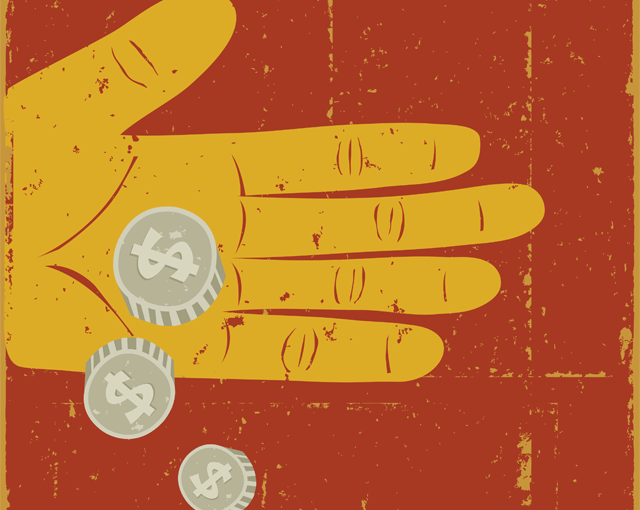“You cannot separate people from the environment,” says Michael Van Patten, former Mission Markets CEO and current Founder of ethical investment tech company my4. His new company is a marketplace for investors within the impact and sustainability sector looking for a way to align their personal values with their investments. He shared his views on impact investing with us.
“We’re trying to create an infrastructure where investment can more effectively access these type of opportunities and support the growing global movement of people looking for returns on investment, while also making sure their dollars are going to a tangible social benefit,” says Van Patten.
This way of thinking may not apply to every aspect of an investors portfolio, but clearly they are starting to identify a percentage of their portfolio for this. “We’re creating an infrastructure that integrates existing financial measurement tools that have started giving information on social enterprise or environmental projects. We’re also measuring the impacts above and beyond the financial benefits an investor might receive.”
“Most people look at impact asset markets and treat them differently,” says Van Patten. “Yes, they are different, but you need to speak to traditional investors in their own language. The impact assets market is still small compared to traditional markets, and the world doesn’t really fully understand them yet.
To become effective worldwide, and to ultimately change the way we do business, we need to put this in a format that investment advisors, brokers and other gatekeepers of wealth understand.”
“From this sector you’re going to see the next generation of major corporations emerge, the future Fortune 500 companies.”
At the very least, these gatekeepers should be educated enough to be able to respond intelligently to the growing number of requests that are arising from investors wanting to enter these markets. Van Patten doesn’t treat impact investing as a niche market but as a mainstream one. “The obstacles we face are that many organizations seeking capital are small, not well-known and are still in their formative years.
Large established companies giving regular and predictable returns doesn’t exist yet. The benchmark tools an investor might use when reviewing a company’s performance, such as the risk and return over ten years, is not available yet, as this industry is still too young.
“One of the biggest obstacles is that investment-seeking companies tend to be private and in the U.S. you have to raise capital in a private placement that is only available to accredited investors. These types of investment opportunities are only available legally to someone who has a lot of money. Anyone who doesn’t qualify as an accredited investor cannot even begin to look at these opportunities. That’s a big roadblock, and we’re trying to change it.
“On returns, it really depends on how you view ‘return’. Historically, these investment opportunities have been in the form of debt or a form of debt and equity, and typically the returns were not as high as traditional markets. But now all that’s changing.
“Whatever you call this sector, it can only grow. From this sector you’re going to see the next generation of major corporations emerge, the future Fortune 500 companies. Before this happens you’ll see a lot of them struggle because we’re still in infancy .”
In the future, Van Patten says that products and services seeking this kind of investment will have to be transparent in their social and environmental footprints. “The future of finance is going to have to incorporate these two externalities as part of the new way of doing business,” he says. “How this will be incorporated into a companies balance-sheet is yet to be seen, but the writing is on the wall.
Major corporations are now part of working groups, established to create transparency in the social and environmental footprint of companies. For example, companies such as Levi Strauss, Gap, Walmart, Patagonia and Timberland are now placing information on their clothing or food that allows you to rate the environmental footprint of that product.
As well as the obvious good this creates for the planet, it’s also clever marketing. They manage to distinguish themselves from competitors, but most importantly it creates an opportunity for those companies that aren’t onboard to start losing market share.” Whether companies reveal their responsible behavior in an investor report, annual report, product labels or as part of their service, this fact is going to drive consumer and investor demand in the future,” says Van Patten.
“Presently, the market is clearly not favoring a company that is sustainable, it is just not being priced into a company’s stock. Eventually these issues are going to become evident in company annual reports, and it will begin to affect that company. For example, a company that pollutes will be exposed, and its stock will be effected adversely – not only by consumers refusing to buy their goods, but also from giant corporations, with good governance, who might cut them from their supply chain.
Companies should not make the mistake of focusing solely on consumer sentiment, but also on business-to-business transactions. “If an investor knows that a company he’s invested in is already thinking ahead and initiating business models on how to become more sustainable and transparent, then that shows a management team that’s already on its toes and focusing on the next big thing.
If they’re not, then you need to question whether that company, and management, is actually seeing the change happening in the world right now. If you ‘get it’ as a company, then you acknowledge your actions have global implications and you implement that as a business process.
When this becomes more recognized, you’ll see the stock prices of these companies rise and carry a premium as it reflects on how innovative and forward-thinking management is. To do this you need vision and belief in what you’re doing.
Be bold, even when a market that may not yet ‘be there.’ Your ideas need to cater for where the market is right now, and at the same time, actively shift towards where you aim to be.”




































